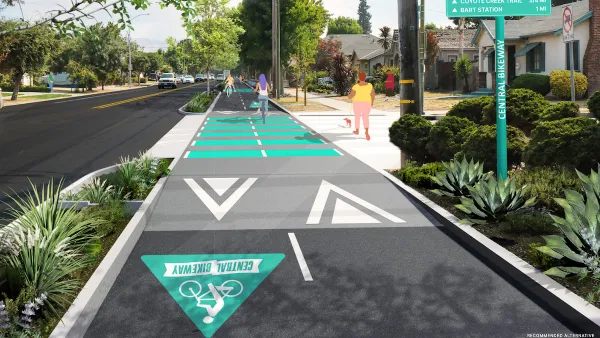Animal-vehicle collisions cause billions in property damage, hundreds of human deaths, and dramatic losses in animal populations every year. Monitoring migration and building for animals can make roads safer for everyone.

Writing in Governing, Matt Skroch explains the value of investing in wildlife crossings and other infrastructure projects that help urban and regional planners understand wildlife migration patterns and protect animals from traffic collisions.
According to Skroch, “These accidents lead to some 200 human deaths and 26,000 injuries each year, resulting in more than $8 billion in property damage, health-care costs and lost workdays, according to the U.S. Department of Transportation.” For the animals, and the industries that depend on them, the news is equally bad. “In Wyoming, for example, the mule deer population, which supports more than $300 million in annual hunting-related spending in the state, has decreased by 40 percent since 2000, due in large part to habitat fragmentation caused by roads and development.”
Yet Skroch writes that “Advances in research technology over the past decade have revolutionized experts’ understanding of how wildlife move across landscapes and are now helping to resolve wildlife-vehicle conflicts that are rising due to increased development.” Today, GPS collars and well-placed under- or overpasses can help researchers understand movement patterns and keep animals out of harm’s way.
“In the face of climate change, sustaining these landscape connections is more important than ever, as it helps provide greater ecosystem resilience for species that migrate between habitats,” Skroch argues. Federal officials have taken note. “On the federal level, the Infrastructure Investment and Jobs Act of 2021 includes billions of dollars over five years for wildlife and aquatic connectivity programs, along with $350 million for a new wildlife-crossing construction program.” In Los Angeles, the world’s largest wildlife crossing broke ground earlier this year.
FULL STORY: The Dreadful Toll of Wildlife-Vehicle Collisions — and What We Can Do About It

Planetizen Federal Action Tracker
A weekly monitor of how Trump’s orders and actions are impacting planners and planning in America.

Silicon Valley ‘Bike Superhighway’ Awarded $14M State Grant
A Caltrans grant brings the 10-mile Central Bikeway project connecting Santa Clara and East San Jose closer to fruition.

Amtrak Cutting Jobs, Funding to High-Speed Rail
The agency plans to cut 10 percent of its workforce and has confirmed it will not fund new high-speed rail projects.

California Set to Increase Electric Truck Chargers by 25%
The California Transportation Commission approved funding for an additional 500 charging ports for electric trucks along some of the state’s busiest freight corridors.

21 Climate Resilience Projects Cancelled by the EPA
The federal government has pulled funding for at least 21 projects related to farming, food systems, and environmental justice to comply with one of Trump’s early executive orders.

Trump Executive Order on Homelessness Calls for Forced Institutionalization
The order seeks to remove legal precedents and consent decrees that prevent cities from moving unhoused people from the street to treatment centers.
Urban Design for Planners 1: Software Tools
This six-course series explores essential urban design concepts using open source software and equips planners with the tools they need to participate fully in the urban design process.
Planning for Universal Design
Learn the tools for implementing Universal Design in planning regulations.
Yukon Government
Caltrans
New Jersey Institute of Technology
Mpact (founded as Rail~Volution)
City of Camden Redevelopment Agency
City of Norman, Oklahoma
City of Portland
City of Laramie





























